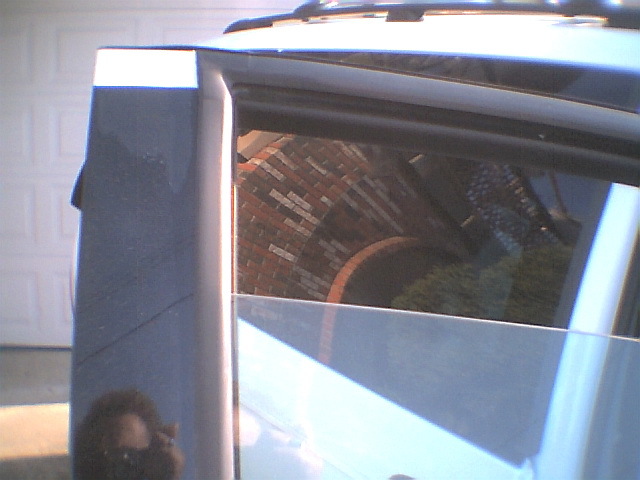Question refinish is it possibl
refinish is it possibl
QUESTION: Octavio I have read all the posts and answers and there is nothing about a 2000 caravan with plastic door pillars, gloss black. I can't afford to replace two of them and they are sun damaged and have begun to peel and chalk. This is the thin clear coat I suspect. Is it possible to refinish them with wet sanding and clear coating. I have tried this method but the clear coat seems to crack when drying. I have sanded to 600 wet and used plas tick to clean them. I followed the directions on the spray can but to no avail. I am asking if I can dry spray the first few coats then wet sand with 1000 and put a heavy coat on.
Thanks in advance for your time.
ANSWER: Hi Steve, Although is not a general rule, these pillars are made of Polyurethane, a polymer which is a combination of two substances: a polyol (alcohol) and methyl di-isocyante to form a high density foam. As the two components react inside the mould, they form an open cell structure. A common problem for painters of these and other parts as bumpers and spoilers, is that they use paint removers or cleaners that may contain solvents that react with and inhibit successive new paint or clear coats. The result as you say, is cracking and chalking. Some of these substances promote polymer decomposition with irreparable damage. Once the foam cells are full of solvent is almost impossible to get rid of it. Besides natural decomposition of the plastic is common place when polyuretane is exposed to sun light despite clear coat manufacturers claim UV protection. My suggestion for you Steve, is to sand dry again, and try evaporation of solvents with the help of a heavy duty heat gun. If material is still in acceptable condition it will endure good heating and may eventually be apt for new coats. Use only suitable adhesion promoting primers for this material >PU<, use no cleaners based on solvents and proceed with clear coat application. If the problem persists after all this, maybe the polymer is damaged beyond repair and those imperceptible cracks in the plastic will appear again and again in future coats. Please let me know how it came out. Thanks
---------- FOLLOW-UP ----------
QUESTION: Hello again Octavio.
Please disregard my first reply because I did it in a hurry and haste makes waste.
I read your reply and I have to disagree that my door pillar is a high density foam. This seems more hard in substance just like the black gloss plastic that Kodak uses on the front of their new printers. This plastic is of a black substance as one of the corner tabs is broken off and is black right through. As I glance around I notice that the coffee maker is of the same substance.
What I noticed about the door pillar is that there is a flaking off of the clear coat at the top and under that the plastic is dull. Then part way down it starts to turn milky along the edge, which leaves me to believe that it is clear coat on top and it comes this way from the factory where ever that may be. I spoke with the guy at the automotive store in the paint department and he said the clear coat is spider webbing and doesn't know why if I have followed the instructions. The weather her on the pacific coast has been dry and hot for a while when I tried spraying it, so I don't believe humidity to be a problem.
I will try your suggestion because I was thinking this myself using a heat gun. I will keep you posted so the other people can be informed as well.
I thank you so much for your efforts at helping all concerned. You guys are worth your weight in gold.
AnswerSteve, the color of a plastic is not an indication of the kind of plastic we are dealing with, this is due to pigmentation.Plastics are classified primarily in 3 big groups:
thermoplastics:if they can be transformed with the application of heat. i.e. for instance,ABS, Polycarbonate, polybutylene etc.
thermosets:if they can not be heat- transformed.examples: polyurethane,bakelite, epoxies,carbon and fiber glass. and,
elastomers: rubbers, silicone etc. My suggestion is to use a soldering iron or a very hot nail to see how the plastics responds. If pillars are
affected by heat, then do not use the heat gun, as this may deform the plastic.If it is not PU, then this part is for sure made of any of the three substances I mentioned first or a mixture of some ( a blend copolymer.This plastics do not withstand some solvents prensent in cleaners, nor sun light over periods of exposition longer than seven years in cool weather. There is no way to recover a thermoplastic if has suffered these conditions at least for a clear coat. With fillers and opaque paints, will be fine...
